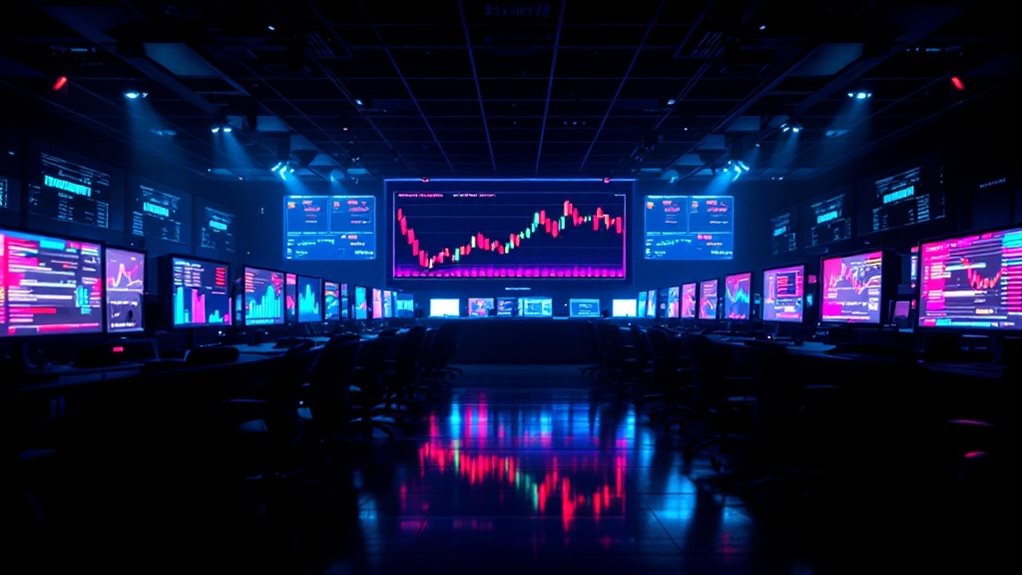Trading volume in cryptocurrency represents the total amount of buying and selling activity within a specific timeframe, usually 24 hours. It's measured by either the total value in dollars or the number of crypto units traded across exchanges. Higher trading volumes typically mean it's easier to buy or sell without causing big price swings. Volume data helps show how active or interested traders are in a particular cryptocurrency. Understanding volume patterns reveals important insights about market behavior and trends.

Trading volume in cryptocurrency represents the total amount of buying and selling activity that happens within a specific time period, usually 24 hours. It's measured either by the total value of trades in dollars or other currencies, or by the number of cryptocurrency units traded. When people trade crypto on exchanges, each transaction gets added to the daily volume, giving traders and investors a clear picture of market activity. Market liquidity directly impacts the spreads between buy and sell orders.
Trading volume works like a thermometer for the crypto market, showing how much interest there is in a particular cryptocurrency. When lots of people are buying and selling, the volume goes up. Higher trading volumes usually mean it's easier to buy or sell quickly without causing big price changes. For example, if someone wants to trade 10 ETH and there's high volume, they're more likely to get a fair price without much delay. Basic supply and demand principles greatly influence these volume patterns and subsequent price movements.
The math behind trading volume is pretty straightforward. If someone sells 10 Bitcoin at $30,000 each, that creates a volume of $300,000 or 10 BTC. To get the total market volume, you'd add up all these trades from different exchanges, including both centralized platforms like Coinbase and decentralized exchanges. This gives a complete picture of how much trading is happening worldwide. Bitcoin demonstrated this significantly when it reached peak trading volumes during the Covid market crash of 2020.
Several things can make trading volume go up or down. When there's big news about a cryptocurrency, like a major upgrade to its network or new partnerships, more people might start trading it. Government announcements about crypto regulations can also cause volume to spike. Even broader economic events, like changes in interest rates or stock market movements, can affect how much crypto trading happens.
The volume isn't just a number – it's a valuable tool for understanding market trends. When prices change with high volume, it often means the move is more significant and might continue. Low volume during price changes might suggest less conviction in the market. Traders watch these patterns to help understand what might happen next, though past patterns don't guarantee future results.
Volume data helps everyone in the crypto market make more informed decisions. It shows which cryptocurrencies are actively traded and which might be harder to buy or sell quickly. For the average person interested in crypto, understanding trading volume helps them see how active and healthy a particular cryptocurrency's market is.
Frequently Asked Questions
How Do Wash Trading Schemes Affect Cryptocurrency Volume Reporting?
Wash trading schemes massively inflate reported cryptocurrency trading volumes by creating fake trades.
Traders buy and sell to themselves or use automated bots to generate artificial activity.
It's estimated that 70% of reported volume on unregulated exchanges isn't real.
This makes cryptocurrencies appear more actively traded than they really are.
The practice helps exchanges climb rankings and makes coins look more popular to investors.
Can Trading Volume Predict Future Price Movements in Crypto Markets?
Trading volume can help signal potential price changes in crypto markets, but it's not a guaranteed predictor. High volume often comes before big price moves, while low volume during price increases might show weak market interest.
When volume rises with price, it's showing strong market support. However, since crypto markets can be manipulated through wash trading and other schemes, volume analysis isn't always reliable on its own.
Why Do Different Exchanges Show Varying Volume Data for Same Cryptocurrencies?
Different exchanges show varying crypto volume data because they don't all count trades the same way. Some include both spot and derivative trading, while others only count spot trades.
Each exchange also has its own trading pool and regional differences. Unfortunately, some exchanges inflate their numbers through wash trading or bot activity.
Data reporting delays and different time zones can also cause volume numbers to look different across platforms.
What Time of Day Typically Shows the Highest Cryptocurrency Trading Volume?
Trading volume typically peaks during U.S. market hours, from 8 AM to 4 PM EST. This coincides with Wall Street's trading day and creates an overlap with European markets.
The busiest period is often between 8 AM and 12 PM EST when both U.S. and European traders are active. During these hours, there's more institutional trading and higher liquidity.
Weekday trading shows higher volumes than weekends, with Tuesday through Thursday being particularly active.
How Does Trading Volume Compare Between Centralized and Decentralized Exchanges?
Centralized exchanges (CEXs) typically have much higher trading volume than decentralized exchanges (DEXs).
While CEXs handle hundreds of millions in daily trades, DEXs process a smaller fraction of overall volume.
As of 2022, CEXs were responsible for 45% of on-chain transactions, while DEXs handled 55%.
It's worth noting that most CEX trading happens off-chain, and the top five DEXs account for about 85% of all DEX volume.





